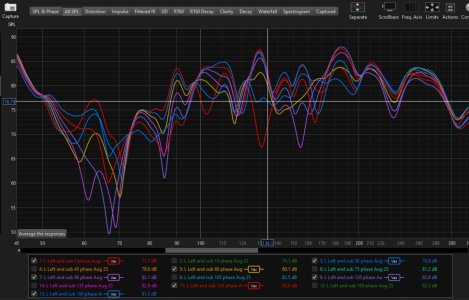LennyBruce
Member
- Joined
- Aug 20, 2024
- Messages
- 99
My current speakers are Q Acoustics 3050i flood standers.
Their specs have a frequency response of 44 Hz – 30 kHz.
I have an old Kef PSW 2000 in the loft, it's specs say 35 to 150 Hz.
Should I apply settings for the subwoofer to deal with everything up to 150 Hz?
Or just everything below 44Hz?
Or is it a matter of trial and error?
Is it worth even bothering?
Their specs have a frequency response of 44 Hz – 30 kHz.
I have an old Kef PSW 2000 in the loft, it's specs say 35 to 150 Hz.
Should I apply settings for the subwoofer to deal with everything up to 150 Hz?
Or just everything below 44Hz?
Or is it a matter of trial and error?
Is it worth even bothering?



